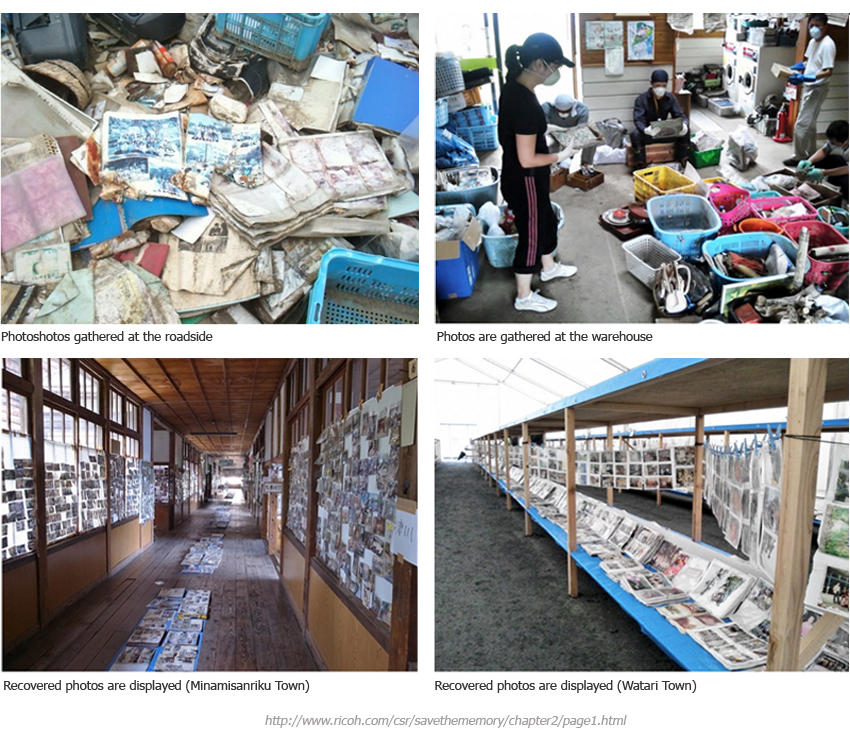Photo restoration is big business. Photos seemingly damaged beyond repair by mold, water, fire or other factors are painstakingly restored after they are scanned and converted to the required digital format. Even if you’ve got photos split into many pieces, they can be joined and repaired. Faded photos, photos with undesirable or unintended light and shadow effects, and photos with color shading can also be transformed to their intended appearance.
The development of photo scanning, restoration and image editing software has been significant which, combined with the expertise of professionals, can bring about amazing restoration projects.
Save the Memory
The “Save the Memory” project in Japan is an example. Initiated by the printer and copier manufacturer Ricoh, the project restored over 90,000 photos of people who lost many of their belongings and some of their loved ones to the 2011 Tohoku tsunami and earthquake that struck Japan. It showcased the progress of technology and the fact that there is nothing that systematic and streamlined functioning cannot achieve.
Ricoh was one of the many organizations that carried out the initiative. It took four years for the company to complete the Save the Memory project which found 418,721 photos of which it could manage to restore and return 90,128.
How the Project Went About
The process was quite an interesting but elaborate one:
- It all began with collecting the photos from the muddy debris.
- They were sent to photo collection sites set up at the locations.
- After an initial display in these locations, the damaged photos were packed and sent to the company’s facilities.
- There the prints were painstakingly cleaned by workers in assembly lines. The cleaning process involved brushing off the dirt and washing the photos.
- Then they were hung on nets to dry after which each of them was scanned and digitized. The saved JPEGs were each assigned a control number.
- The scans were then worked upon through advanced image editing and restoration software. The finally prepared shots were organized based on the region where they were found and their category (the theme of the photos).
- The restored prints were then shipped to the locations from where they were retrieved, and placed in protective plastic coverings printed with their respective control numbers.
- In each of these locations, photo centers were established where locals came and browsed the digital database on computers.
- If they found a photo which was theirs, the restored print was retrieved easily thanks to the control number that was assigned to the file.
Conversion to digital format enables photographs, paintings and even old and fragile books and pamphlets to be restored and preserved for future generations. The Save the Memory project and the efforts of other organizations in Japan helped keep memories alive. Who said technology isn’t about emotions?


